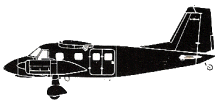Incident Overview
Description
Novair flight 158, an Airbus A321neo, suffered a hard landing accident at Billund Airport, Denmark. The captain was the pilot flying and the first officer was the pilot monitoring. The en route flight, the descent and the initial approach for runway 27 at Billund proceeded uneventfully, with the aircraft being radar vectored for an Instrument Landing System (ILS) approach. On final approach to runway 27, Billund Tower cleared the aircraft to land and reported the wind conditions to be 200ø 12 knots (kts), maximum 29 kts, and minimum 5 kts. Throughout the approach, the flight crew experienced moderate turbulence. The flight crew modified final approach speed (VAPP) was 148 kts (the flight crew added 2 kts the calculated VAPP of 146 kts). At 1000 ft, and at 500 ft Radio Height (RH), the first officer made calls on stabilized approach. The aircraft was configured for landing, with flap position 3, stabilized, and the autopilot engaged and the autothrust engaged and activated in SPEED mode. At approximately 700 ft RH, the flight crew got visual contact with the runway. The Calibrated Air Speed (CAS) from 500 ft RH down to initial touchdown varied between approximately 160 kts CAS and 145 kts CAS. The aircraft remained stabilized on both localizer and glidepath down to 100 ft RH. On short final, the first officer informed the captain of a displayed crosswind of 36 kts. At approximately 190 ft RH, the captain disconnected the autopilot and flew the final approach manually with the autothrust engaged and activated in SPEED mode. At 100 ft RH, the first officer made a standard operating call on aircraft pitch attitude: Pitch 2.5. From approximately 100 ft RH until 35 ft RH, the vertical speed increased from approximately 700 ft/minute (min) to approximately 1100 ft/min. At approximately 25 ft RH, the captain used an abrupt and progressive aft sidestick input and pulled back on the sidestick to full aft deflection to stop the rate of descent. The synthetic voice calls TWENTY, RETARD and the initial touchdown occurred almost simultaneously. Before recorded activation of both main landing gear squat switches (weight on wheels – WOW), the captain advanced the thrust levers forward of the climb detent position. The aircraft made an initial touchdown at approximately 148 kts CAS, with a recorded pitch angle of 5.63ø, a rate of decent of approximately 750 ft/min, and a vertical acceleration of 2.59 g. Upon initial touch down, the ground spoilers did not extend, and the autothrust deactivated. The aircraft lifted off the ground and up to 12 ft RH. During the bounce, the captain repeatedly voiced his surprise on the lack of flare. In the air, the engines spooled up, and the CAS increased to approximately 156 kts. Two synthetic voice calls on excessive pitch (PITCH), and one thrust lever retarding synthetic voice call (RETARD) sounded. The captain retarded the thrust levers to flight idle resulting in ground spoiler extension. The aircraft made a second touchdown at approximately 154 kts CAS, with a recorded pitch angle of 9.49ø and a vertical acceleration of 2.56 g. The aircraft tail section struck the runway. Upon landing, neither of the pilots perceived that a tailstrike might have occurred, and the flight crew continued taxiing to the apron. During taxi to the apron, the captain briefed the passengers on the hard landing. The AIB considers the contributing factors to this specific tailstrike to be: – Gusting and strong crosswinds in dark night. – Moderate turbulence and downdrafts on short final to runway 27 at EKBI. – Too high sink rate, just prior reaching the flare height (destabilization). – No flight crew calls and/or decision on going around on short final or during the bounce. – Two hard landings. – Inappropriate thrust lever management. – Inappropriate pitch control during the bounce resulting in a pitch angle increasing beyond the critical angle.
Source of Information
https://www.havkom.se/en/investigations/civil-luftfart/olycka-pa-billund-flygplats-i-danmarkhttps://www.havkom.se/en/investigations/civil-luftfart/olycka-pa-billund-flygplats-i-danmarkShare on:






